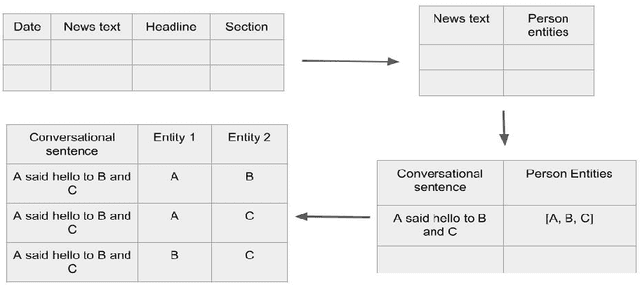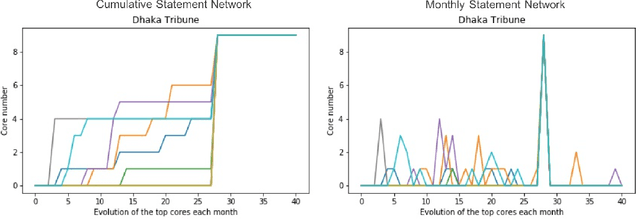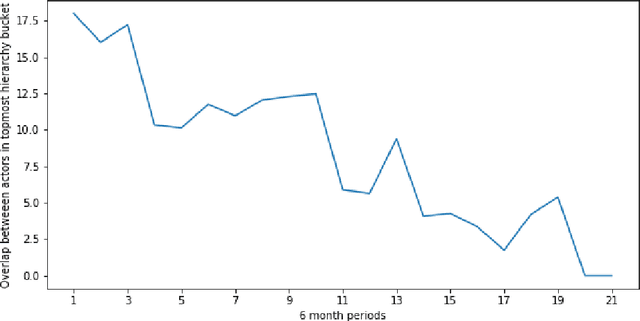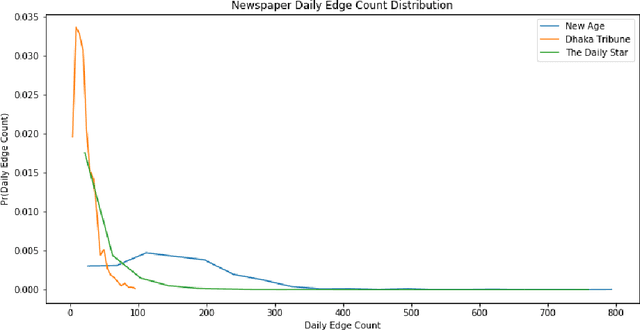Statement networks: a power structure narrative as depicted by newspapers
Paper and Code
Dec 10, 2018



We report a data mining pipeline and subsequent analysis to understand the core periphery power structure created in three national newspapers in Bangladesh, as depicted by statements made by people appearing in news. Statements made by one actor about another actor can be considered a form of public conversation. Named entity recognition techniques can be used to create a temporal actor network from such conversations, which shows some unique structure, and reveals much room for improvement in news reporting and also the top actors' conversation preferences. Our results indicate there is a presence of cliquishness between powerful political leaders when it comes to their appearance in news. We also show how these cohesive cores form through the news articles, and how, over a decade, news cycles change the actors belonging in these groups.
 Add to Chrome
Add to Chrome Add to Firefox
Add to Firefox Add to Edge
Add to Edge